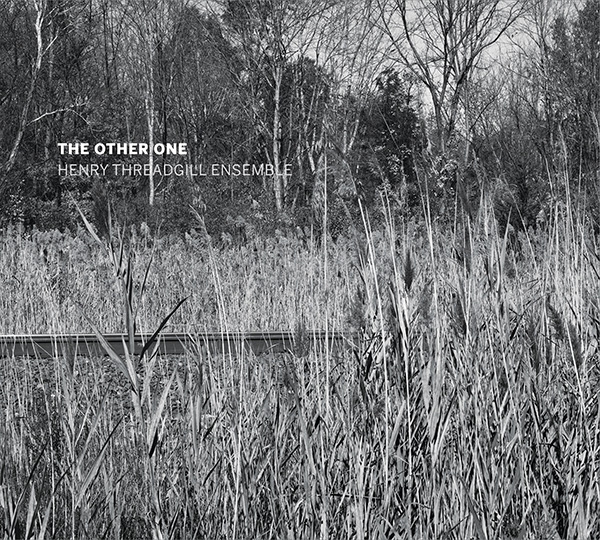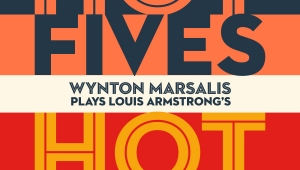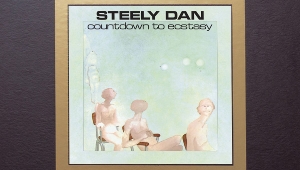| Columns Retired Columns & Blogs |
Recording of September 2023: The Other One

Henry Threadgill Ensemble: The Other One
12-piece ensemble; Threadgill, conductor
Pi PI97 (CD, available as download). 2023. Liberty Ellman, prod.; Stephen Cooper, Eric Shekerjian, engs.
Performance ****½
Sonics ****½
12-piece ensemble; Threadgill, conductor
Pi PI97 (CD, available as download). 2023. Liberty Ellman, prod.; Stephen Cooper, Eric Shekerjian, engs.
Performance ****½
Sonics ****½
At 79, Pulitzer Prize winner and NEA Jazz Master Henry Threadgill is one of the last men standing among the founding fathers of the jazz avant-garde. Because his output of recordings is not voluminous, every new Threadgill release is an event. The Other One is more of an event than most because of its ambition (it is an album-length suite) and its scale: It introduces a new 12-piece ensemble.
Threadgill is one of the true originals in American art. His music is its own universe, with proprietary organizational principles and unique aesthetic assumptions. Over the years, he has assembled a coterie of undaunted artists who have learned to play his music. Several are in the new band: tuba player Jose Davila, cellist Christopher Hoffman, drummer Craig Weinrib, pianist David Virelles. He has also built an adventurous audience and taught them how to listen to Henry Threadgill.
His new suite, titled Of Valence, is a multimedia work. When it debuted with two performances at the Roulette Intermedium in Brooklyn in May 2022, it included video, projected paintings and photographs, a prerecorded choir and prose recitations. This CD is a recording of the second performance with the multi-media elements edited out, leaving only the music. The audience's applause is also edited out (until the end). Yet the recording feels alive. You feel the air around you, in a 240-seat space. All 12 instruments are vivid and clear.
Threadgill came on the scene in the 1970s as a saxophone revolutionary, but he does not play on The Other One. He conducts his cacophonous, arcane, astonishing orchestra. The suite is a rare example of Threadgill's writing for large ensemble and for strings. There is a string section at the heart of this band (violin/viola/two cellos) and also three saxophones (two altos/one tenor), two bassoons, a piano, drums, and a tuba. With this array of instruments, Threadgill has at his disposal a huge diversity of colors and textures.
The first movement begins innocently enough, with David Virelles's isolated, chiming piano. It sounds enigmatic but, unlike most of the music to come, occupies familiar tonal centers. Five minutes in, the rapt atmosphere and the tonality are both shattered when other members of the ensemble dart into the mix. Suddenly there is a great deal going on: competing snatches of melody; contrapuntal collisions; background drones; piercing sonorities from the strings, sometimes sweet, more often scraping and astringent. Threadgill presides over a maelstrom of sonic phenomena. He almost never aggregates his 12 players into a single massed voice, as other big band arrangers do. Instead, he continuously configures selections of them into fresh combinations and startling relationships. As the suite proceeds through its three movements and 17 sections, the transitions from notation to improvisation and back again are rarely obvious.
The Other One is not about solos as such, yet individual improvisers seize brilliant moments: Virelles (who always leaves you wanting more of his evocative piano); Sara Caswell (perhaps now the premier violinist in jazz); the three saxophonists. (Peyton Pleninger, Alfredo Colón, and Noah Becker are young and not yet well known, but in fulfilling their roles here, they spill their guts.)
Threadgill has said that the inspiration for his suite was the exodus of people from New York during the COVID pandemic. The detritus they left behind littered the sidewalks of the East Village where he lives and made him ponder "human transience." Indeed, the episodic character of this music, as the sections (many under two minutes) lurch from one to another, contains connotations of randomness.
But nothing here is accidental. The suite is a work of meticulous intricacy. Threadgill explains that his primary structural concept is "prescribed serial intervallic patterns." Davila, his long-term associate, has said, "It's extremely technical in terms of what we have to think about." This music sounds both technical and wildly unpredictable. Its recurrences are not so obvious as theme-and-variation. (Anyone can do theme-and-variation.) Sonic stimuli constantly shift and evolve and create form, kaleidoscopically. The third and final movement is the shortest yet contains a mind-boggling quantity of simultaneous events: saxophones in catharsis; stringed instruments seething and whirling around one another in widening, dizzying spirals; braying bassoons; a tuba suddenly emerging from the bumping background rhythm to move out front and lead the parade.
Threadgill's music can wear you out. Don't let it. Stay with it, and it will repay your occasional exhaustion with exhilarating awakenings, new realizations of the possible. Henry Threadgill will make new synapses fire in your brain.—Thomas Conrad
- Log in or register to post comments




































